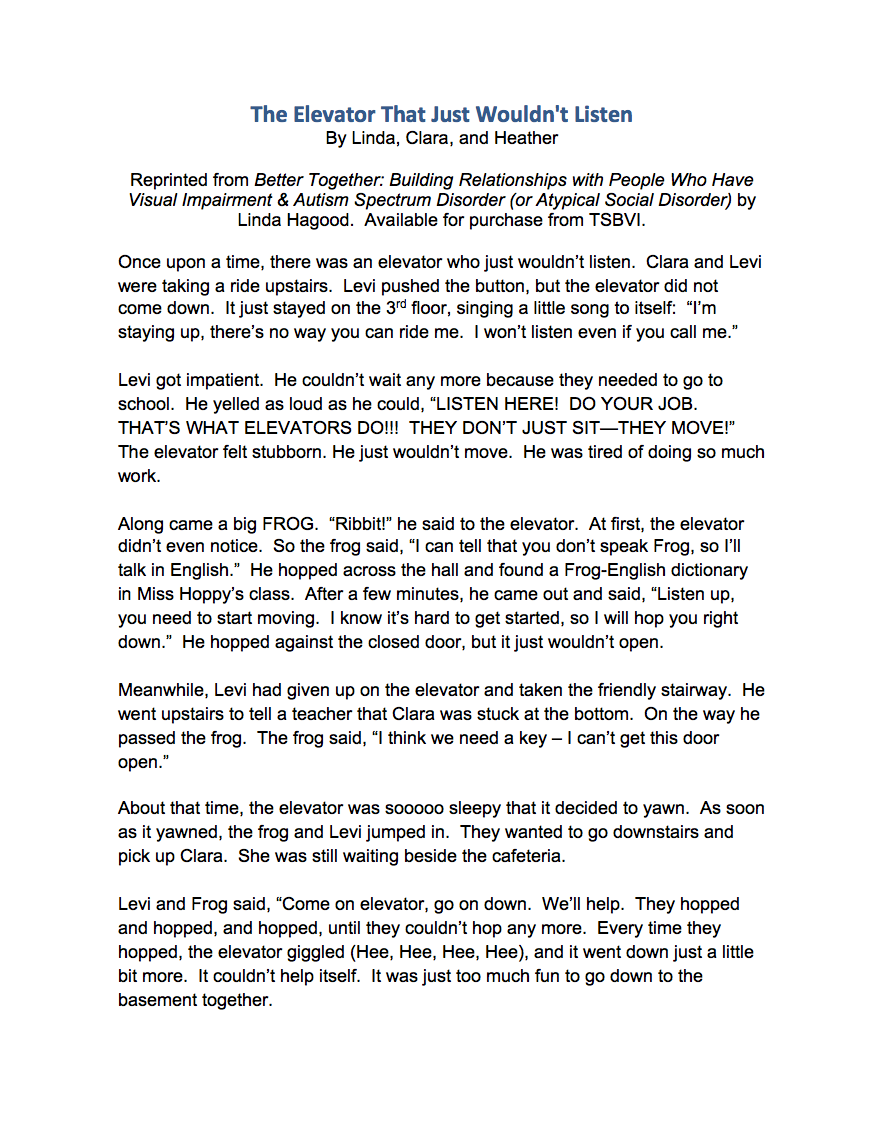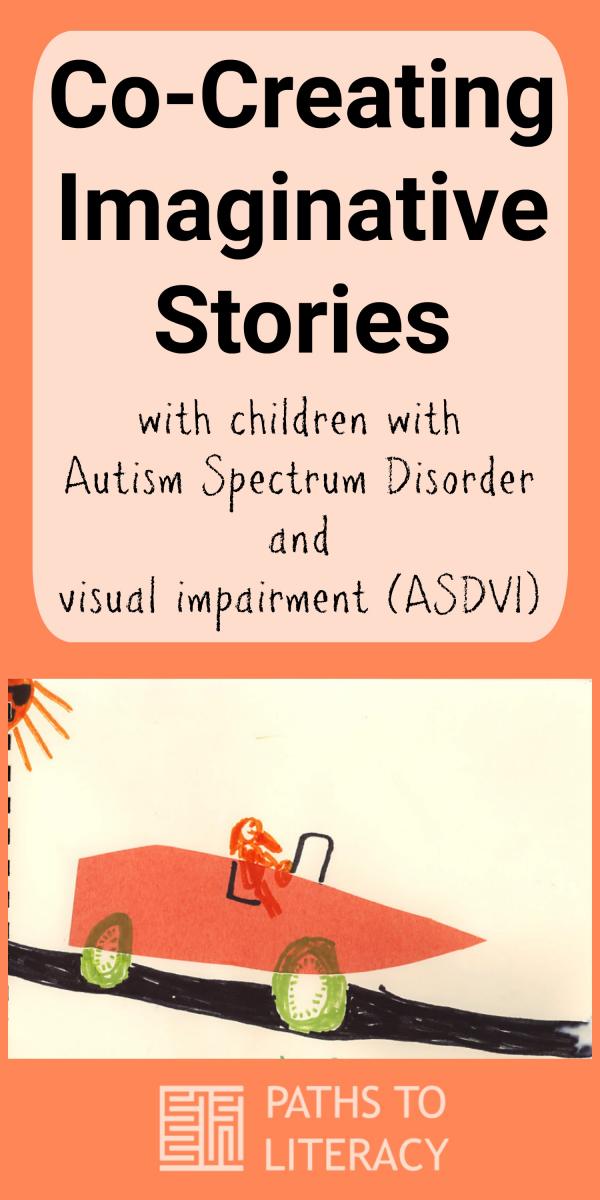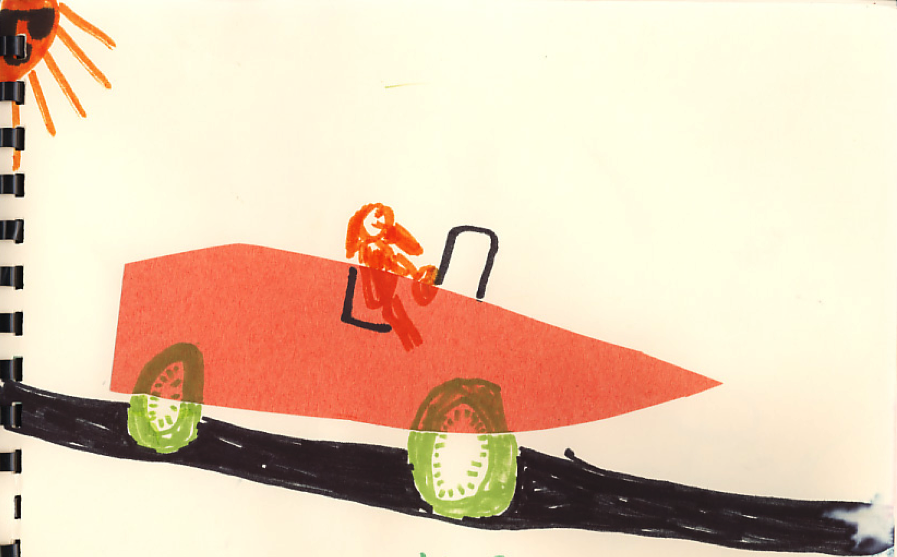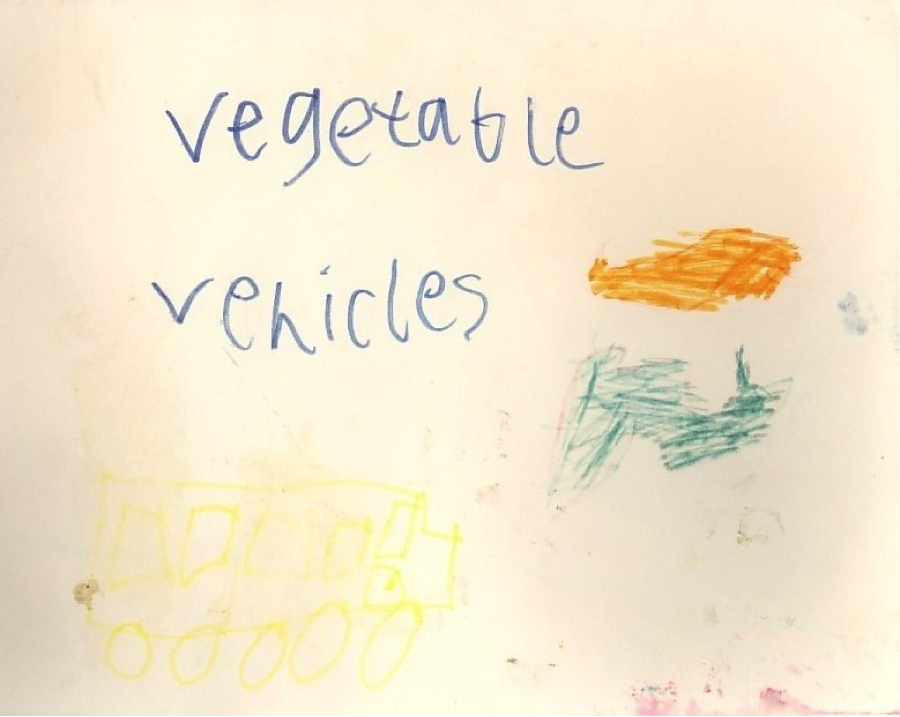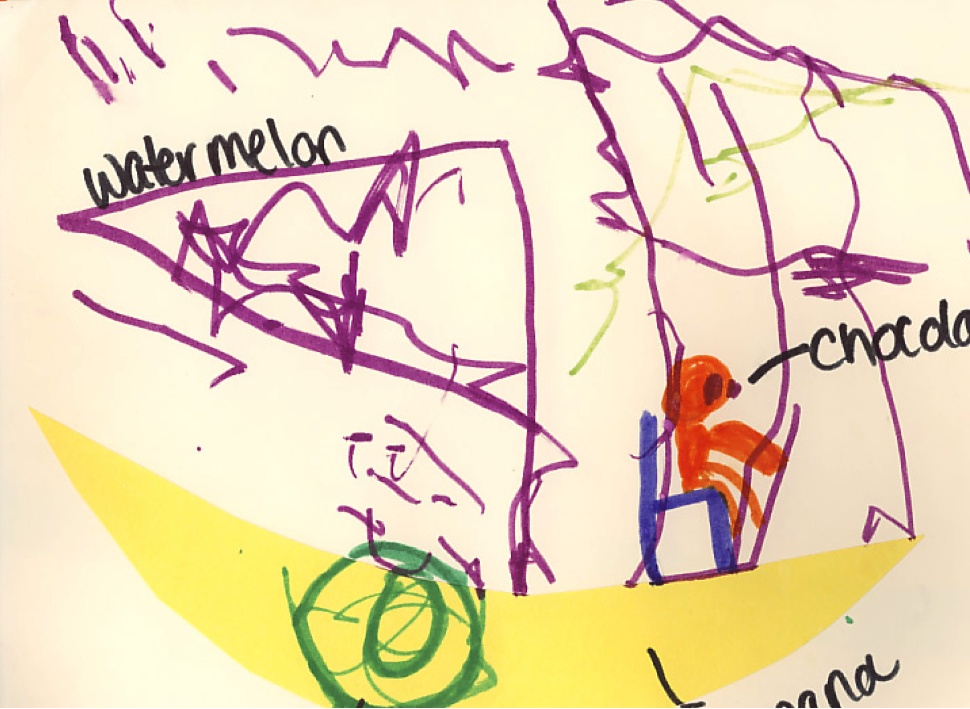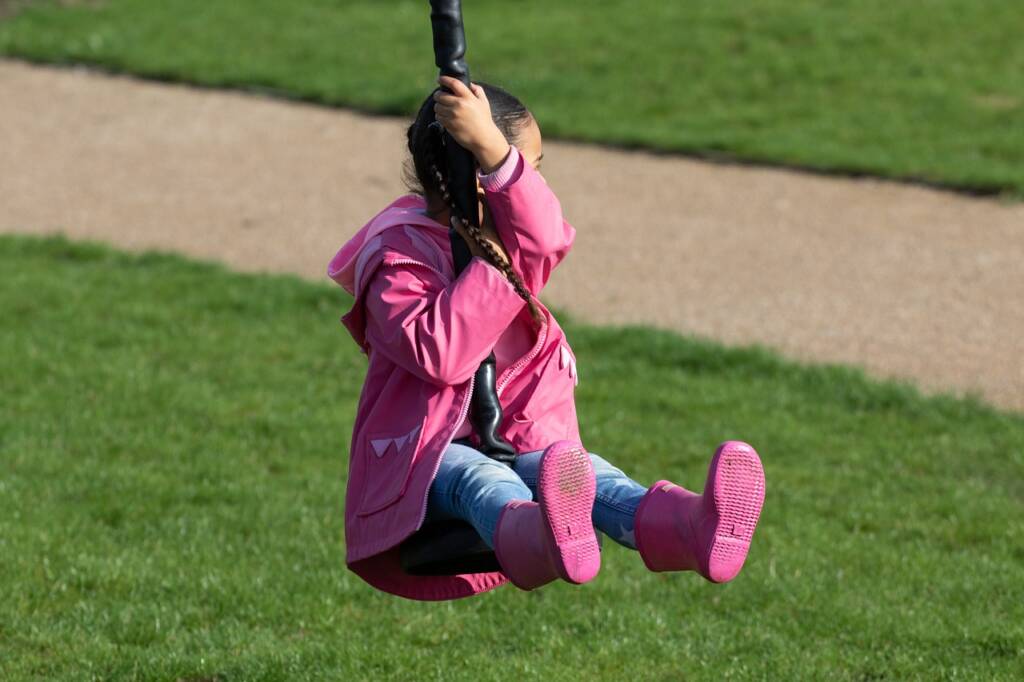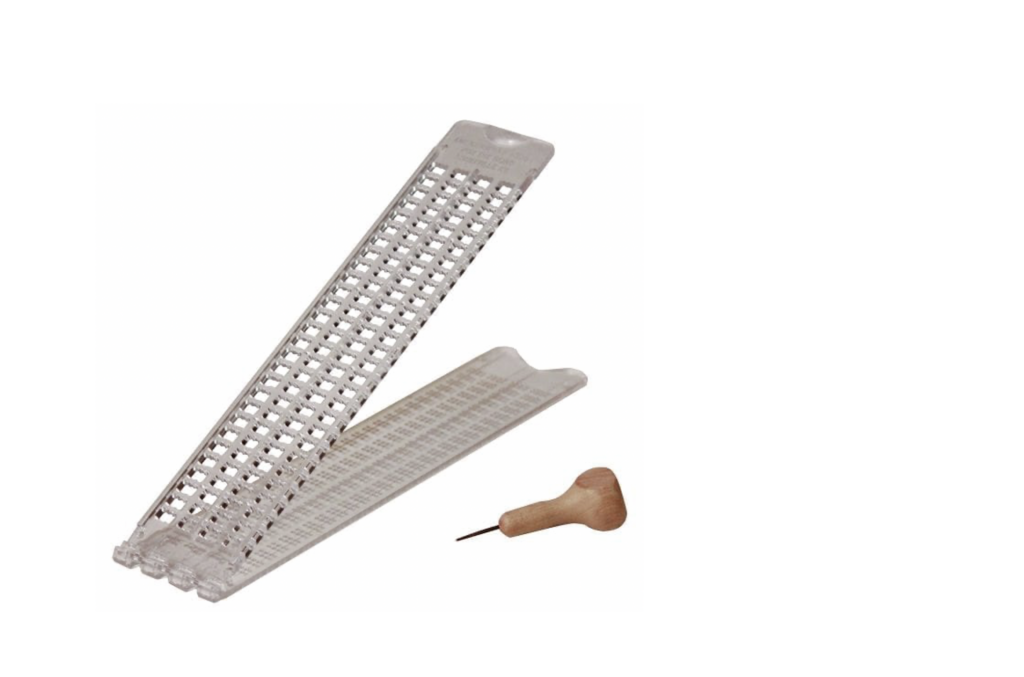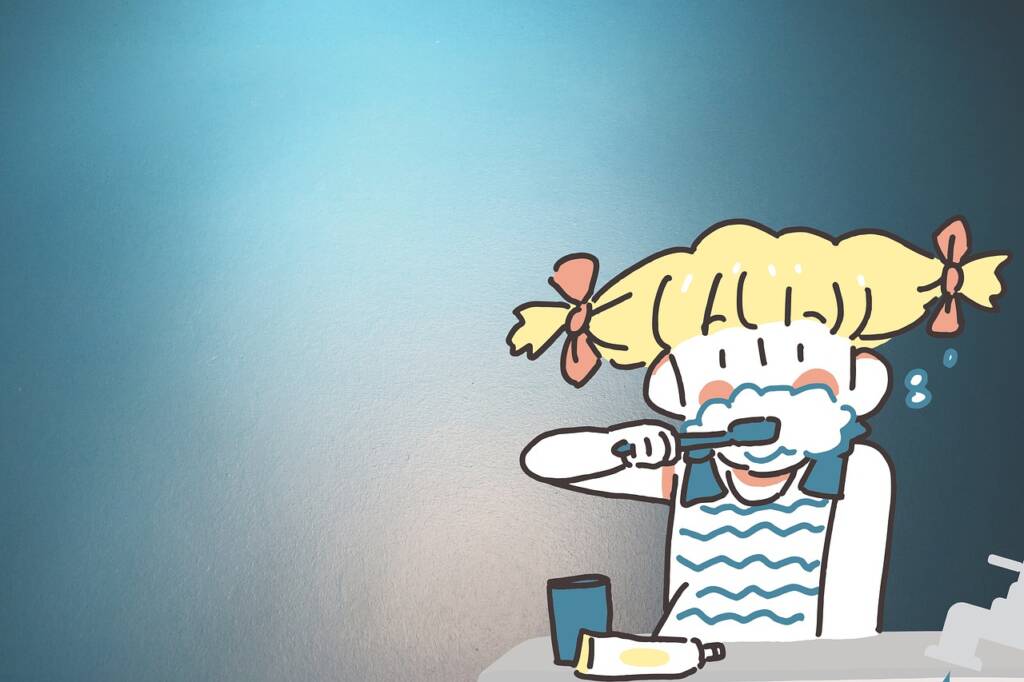I’ve been helping kids tell their imaginative stories for almost twenty years. I once believed the myth that kids who have autism, and sometimes kids who have visual impairment or deafblindness, are not creative—that they are rigid and cannot move beyond a literal interpretation of the world. I’ve definitely given up this stereotype through my experience in helping kids share their play-based ideas with others in this project.
It began for me when I taught in an elementary support classroom for kids who had autism. These kids had normal vision and hearing, and shared many challenges in social learning, play and language with kids who have sensory impairments. Let me share some of the stories these kids co-created, which I later used with others who have sensory impairments.
Vegetable Vehicles
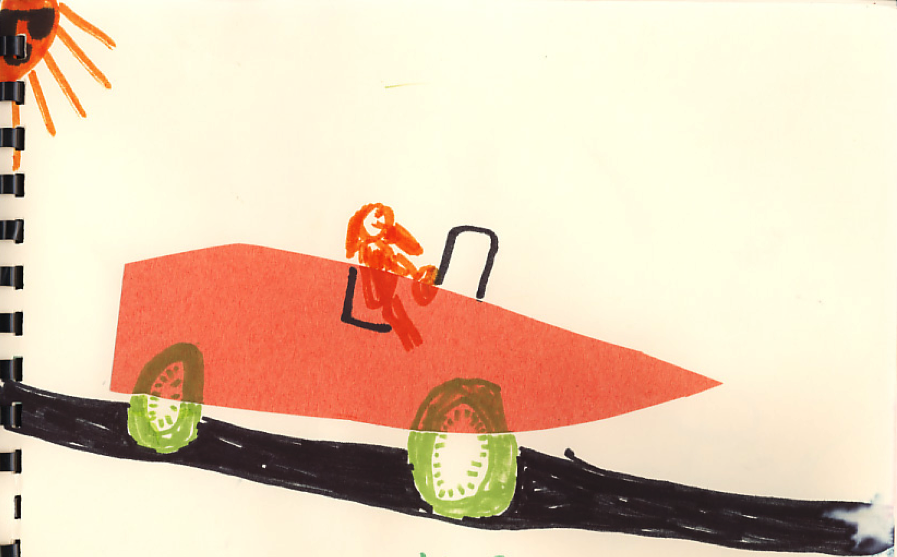 Ben was a first grader, and had a fascination with a book that had a picture of a “carrot car”. The book had a special picture of a car made from a carrot, with wheels made of slices of zucchini. Ben could hardly begin his day without carefully admiring the picture and placing it on a desk. The book was necessary for every transition, and he brought it with him to each class he attended throughout the school day. Teachers asked if we couldn’t “get past” the carrot car “obsession,” because they felt it interfered with his thinking. He asked me one day, “What would happen if there WAS a carrot car?” I decided this would be an interesting project for the play group that we had at lunch time, in which I was encouraging him to play with typical peers. I brought the topic up, and the group created a “plan book” of vegetable vehicles. Each child used their own medium (collage, drawing) to make a plan for a vegetable vehicle they would like to create. All of them had ideas, and Ben’s thinking didn’t seem so “strange” or “obsessive” to them! I bound the book, and brought in lots of vegetables and toothpicks. The group created a carrot car, a zucchini airplane, a broccoli bus, a banana boat, and string bean bicycles. I wish I could have captured Ben’s delight when the whole group propelled their vehicles down the hallways of the school to “block the bus lanes”—this activity was suggested by Ben, who heard a routine announcement every afternoon, regarding “A Ford Explorer is blocking the bus lane”. I found it interesting that his compulsive need for the Carrot Car book faded after this experience…it was as if he had been heard and his interest had been acknowledged.
Ben was a first grader, and had a fascination with a book that had a picture of a “carrot car”. The book had a special picture of a car made from a carrot, with wheels made of slices of zucchini. Ben could hardly begin his day without carefully admiring the picture and placing it on a desk. The book was necessary for every transition, and he brought it with him to each class he attended throughout the school day. Teachers asked if we couldn’t “get past” the carrot car “obsession,” because they felt it interfered with his thinking. He asked me one day, “What would happen if there WAS a carrot car?” I decided this would be an interesting project for the play group that we had at lunch time, in which I was encouraging him to play with typical peers. I brought the topic up, and the group created a “plan book” of vegetable vehicles. Each child used their own medium (collage, drawing) to make a plan for a vegetable vehicle they would like to create. All of them had ideas, and Ben’s thinking didn’t seem so “strange” or “obsessive” to them! I bound the book, and brought in lots of vegetables and toothpicks. The group created a carrot car, a zucchini airplane, a broccoli bus, a banana boat, and string bean bicycles. I wish I could have captured Ben’s delight when the whole group propelled their vehicles down the hallways of the school to “block the bus lanes”—this activity was suggested by Ben, who heard a routine announcement every afternoon, regarding “A Ford Explorer is blocking the bus lane”. I found it interesting that his compulsive need for the Carrot Car book faded after this experience…it was as if he had been heard and his interest had been acknowledged.
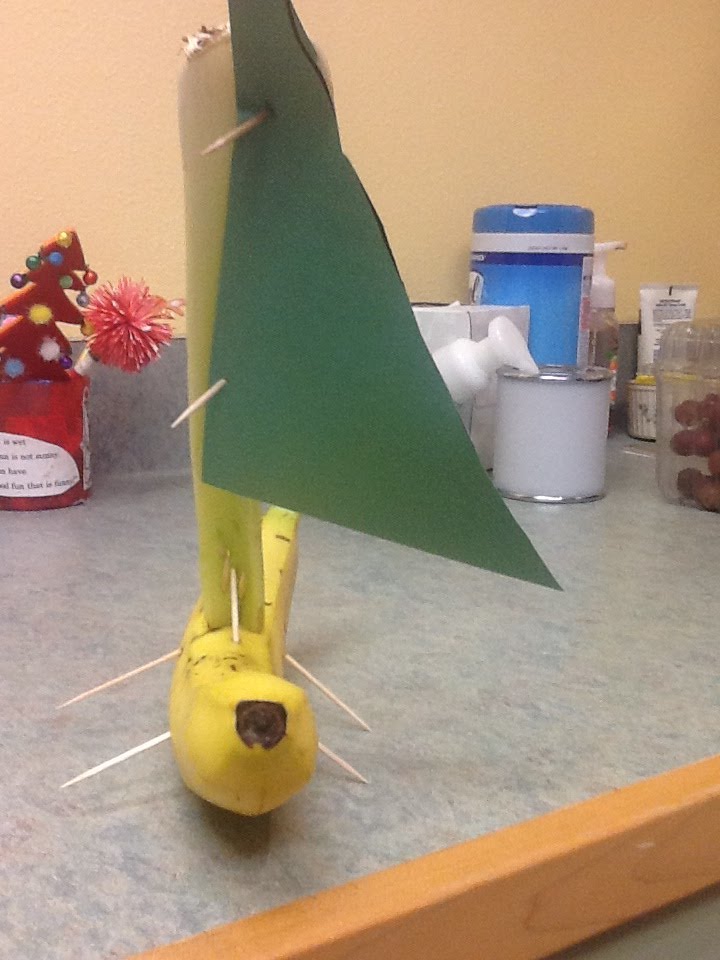
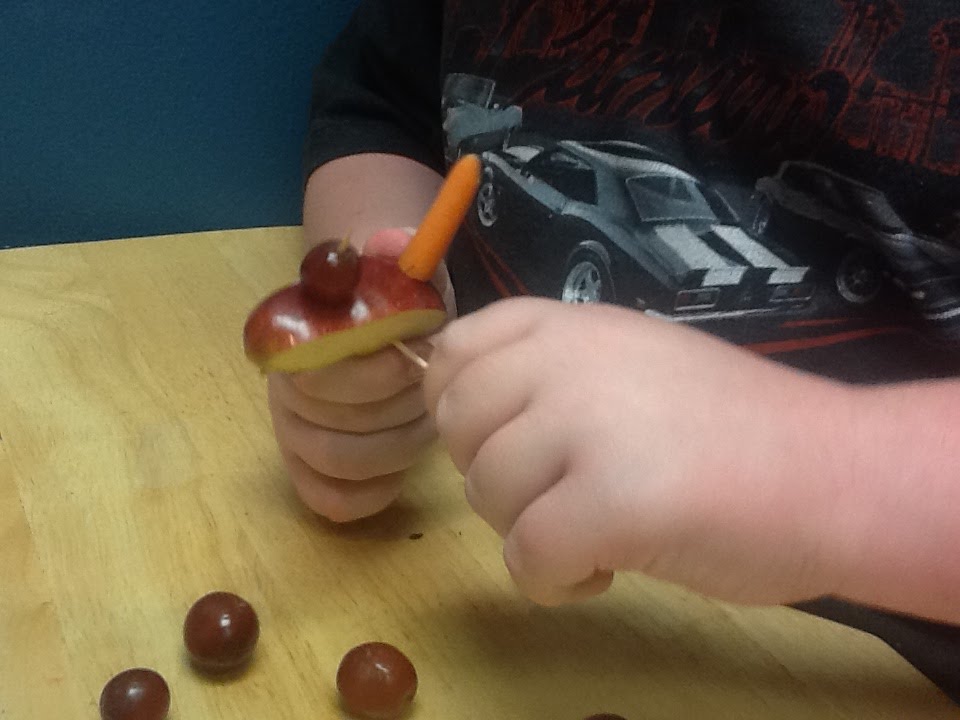
The Role of Writing in Supporting Play
Later that year, he became interested in an idea of building a “stretch limo.” One of my outstanding assistants showed up one morning with a large refrigerator box. The playgroup got to work and made a plan to build a stretch limo, adding a swimming pool and a garden in the back as Ben suggested. When it was completed, Ben got a gleam in his eye and said, “What would happen if we smashed it in the garage door?” Of course, we had to try it out, and the group went after school to Ben’s house, with the stretch limo packed in the back of a staff vehicle. We arrived at his house, and watched while the stretch limo was crushed by his garage door. Every one of the 5 kids was delighted, hopping up and down with joy!
Ben continued his interest in vehicles, and was employed later in life as a car detailer at an auto dealer.
My work with Ben got me thinking about the role of writing in supporting play with kids who have autism. I learned that tangible pictures can be used to share ideas. I learned to adjust my thoughts about kids with autism—they aren’t so rigid and “perseverative”—like other kids, they are creative and the stories in their heads can be appreciated and enacted with joy and delight.
Alphabet Book with Invented Words
Next came Tony…
Another child with autism in my classroom at that time was Tony, who was in fourth grade. He entered my class mid-year, showing great interest in drawing. He made beautiful replications of pictures from Eric Carle books. We admired his imitative work, but didn’t find it to be very creative or novel. He was included in many fourth grade academic classes, though his language level was very limited. Tony had many unpredictable and disruptive behaviors that year, and I often found him being sent out of the general education classes to calm down in my room. I would let him go to his table and draw. One day, an assistant in my classroom brought me his drawings and I was amazed at what she had discovered. He had created an entire alphabet book with one picture for each letter of the alphabet. Many of the pictures were of self- invented words, and when we asked him about them, he could explain them in more detail. Some examples were:
- A is for Aprograque (“a kind of a quilt”)
- K is for Kystrovelytor (“she wears them in her hair”)
- P is for Provatels (“the category that includes both birds and fish”)
- R is for Rascoltorsmatic (“the bottom part of the sled”)
- X is for Xin Nean (“the oval popcorn princess”)
- Y is for Yortolsveth (‘he is the man with the camera, taking a picture of the boy and the dog”)
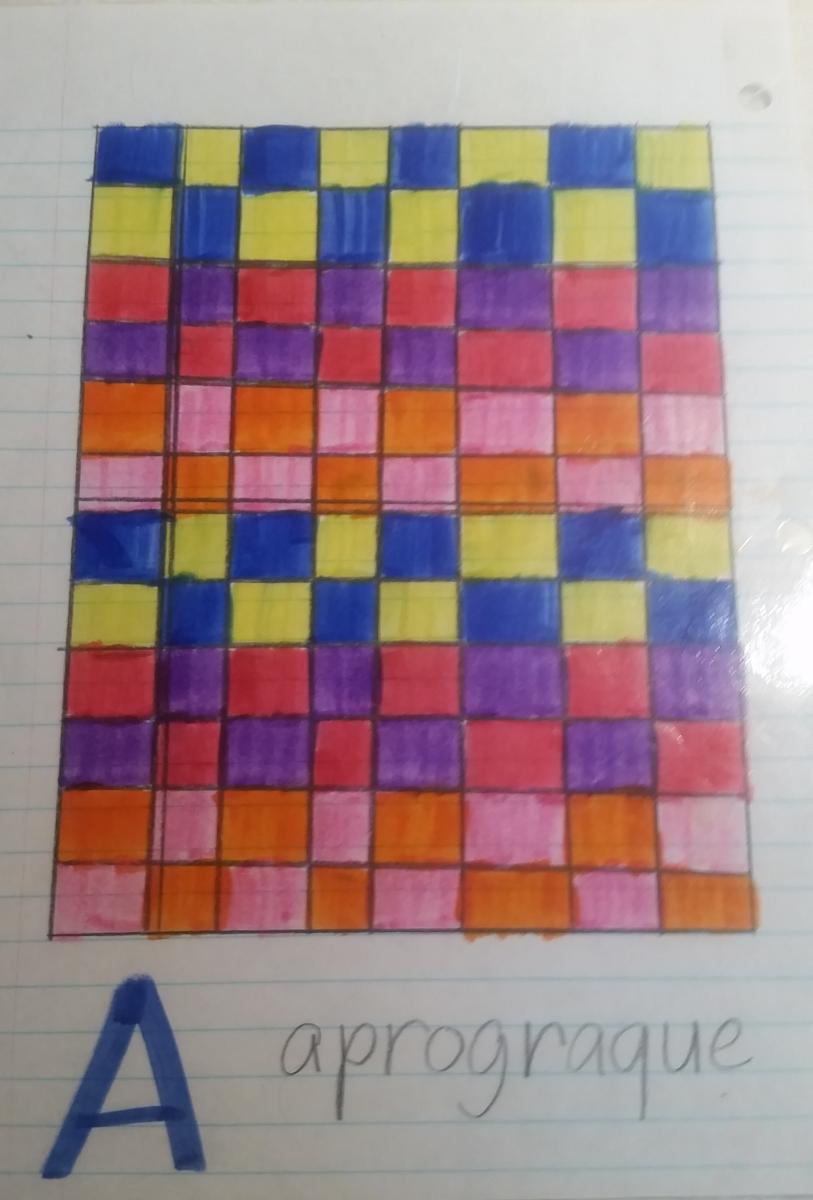
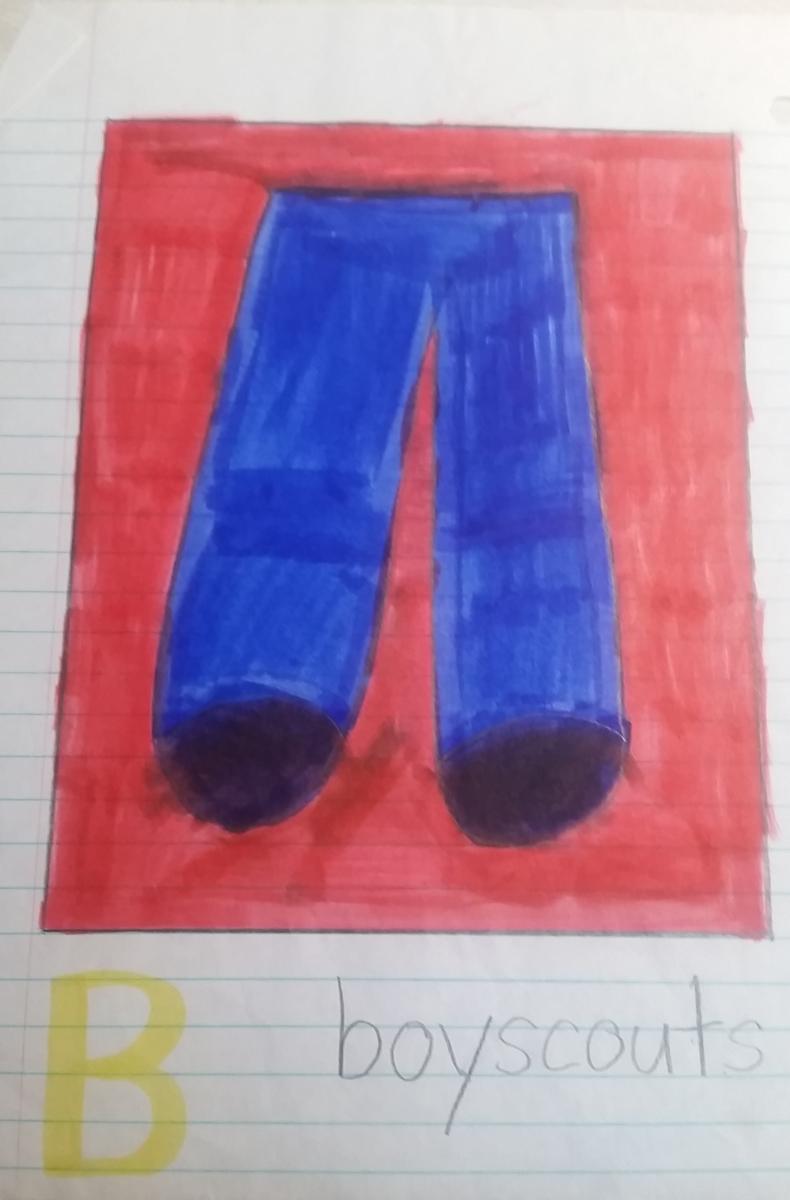
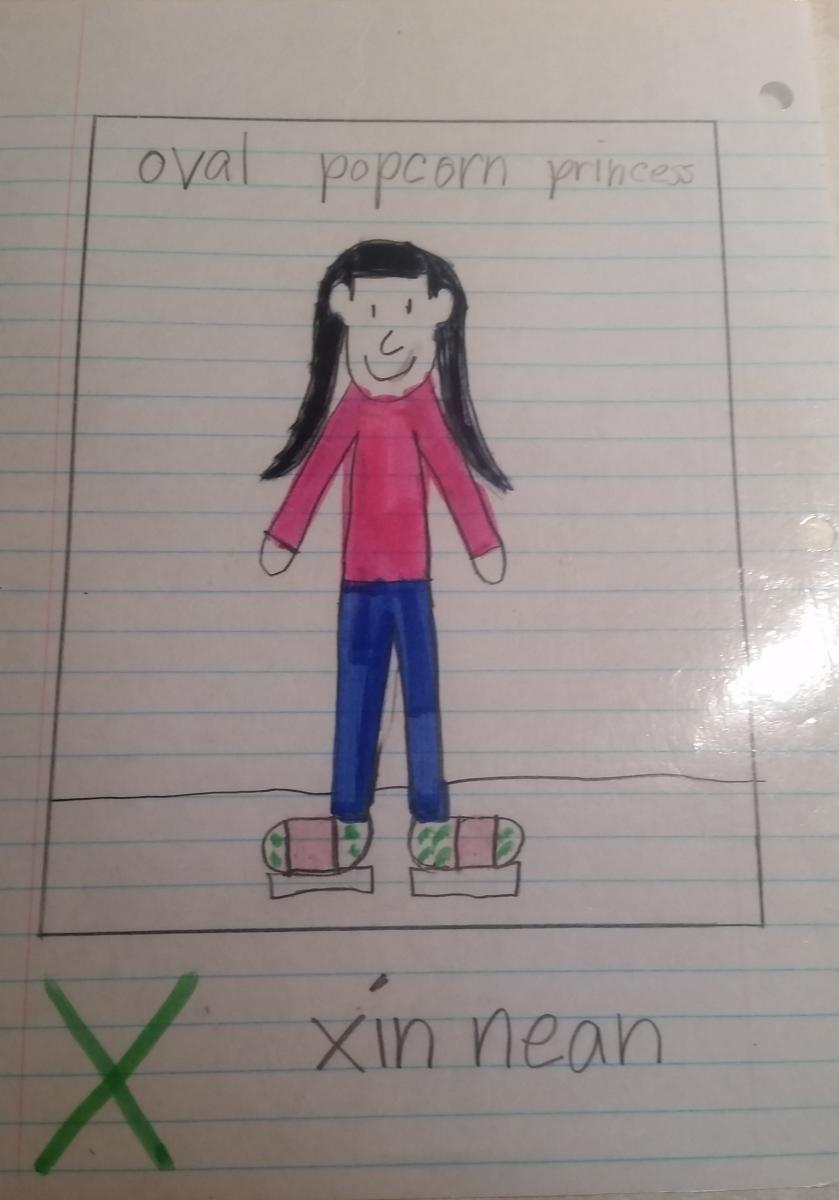
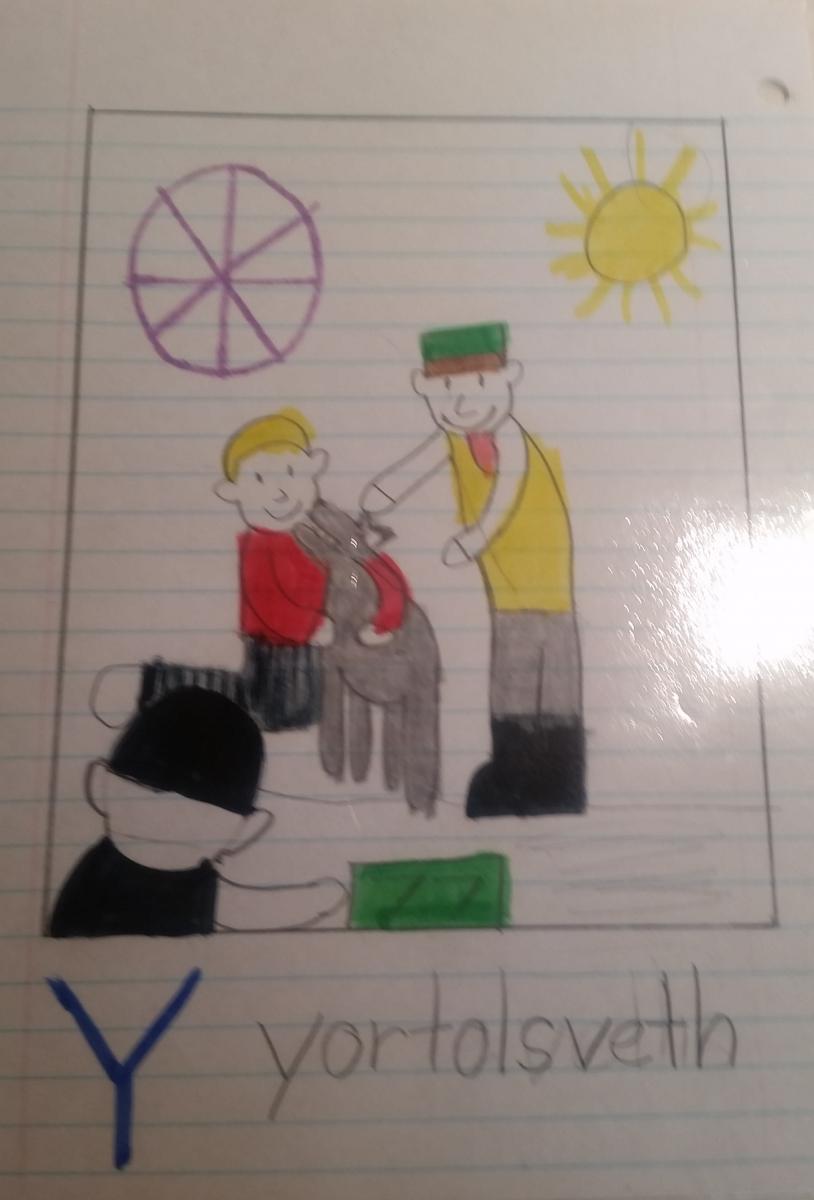
“The dog is licking his friend and he is not in trouble”—this was a common “misbehavior” that got Tony in lots of trouble). I was delighted with this discovery, and it taught me some new things about autism and writing— Tony’s drawing and labeling was a big support for his language production—he had never put this many words together, and previously we had only heard him use single words or short phrases to ask for what he wanted or to protest. With this ABC book, he was really telling us about creative ideas that were in his mind and explaining them to us. I also learned that Tony was using drawing and writing as a strategy for self-regulation—it wasn’t just an “obsession”—if I really listened and paid attention to his drawing and writing, I could understand that he was confused about why his behavior was a problem for others. The dog doesn’t get in trouble for licking people, so why should he? Finally, I learned that Tony had a sense of humor—I loved one of his pictures of “ B is for boy scouts” When I asked him to talk about it, he said playfully—“but only the pants!”
The Elevator That Just Wouldn’t Listen
From Better Together: Building Relationships with People Who Have Visual Impairment & Autism Spectrum Disorder (or Atypical Social Disorder) by Linda Hagood. Available for purchase from TSBVI. Reprinted with permission.

This story was written by two teenage students who knew each other, but were not close friends. Heather, with total blindness, septo-optic dysplasia and many autistic traits, had excellent skills in braille, and loved to write independently. Her greatest challenges were in accepting change and in initiating movement, which impacted her relationships with others, especially peers who were sometimes frightened by her intense outbursts. For example, she often protested and had huge emotional outbursts when transitioning to a yoga class, and refused to participate. When I introduced the idea of writing yoga stories to present to the group, she began to attend the group willingly, and eventually moved to the floor to practice and demonstrate poses. After discovering that story writing and play were helpful in addressing her self-regulation issues in the yoga class, I began to think about using writing to help her collaborate with peers, another important area of need for Heather. She did not like to talk about or process her difficulties with movement or with peer interaction, and the collaborative storytelling context gave her a way to address these issues indirectly, in much the same way that younger children process their emotional challenges in play.
Clara, her partner in this storytelling activity, was a young woman with Traumatic Brain Injury. She had fluctuating visual functioning related to the TBI, and did not read print or braille. Clara’s narrative language was not cohesive, and she frequently drifted from one topic to another in conversation. Like Heather, she had few relationships with peers, preferring to spend her time with adults. At times, she became pre-occupied with adult staff members, such as the residential staff member, Levi, mentioned in this story. In another story, which she developed with me, she enjoyed a fantasy about “switching minds” with her teacher.
The themes which emerged in this story involve those which occur in the students’ everyday lives—
- the elevator and the students’ frustration with it
- the difficulties which Heather has in physical movement
- the students’ need for support and camaraderie
In the storytelling context, as in child’s play, these themes could be explored through their shared imaginative fantasies, and the anxiety that they felt when having more directive conversations was defused. The laughter and joy that occurred in this interaction showed me a new and different way to approach behavior, which was quite helpful for both of the girls in building a mindful approach to their own social emotional challenges.
